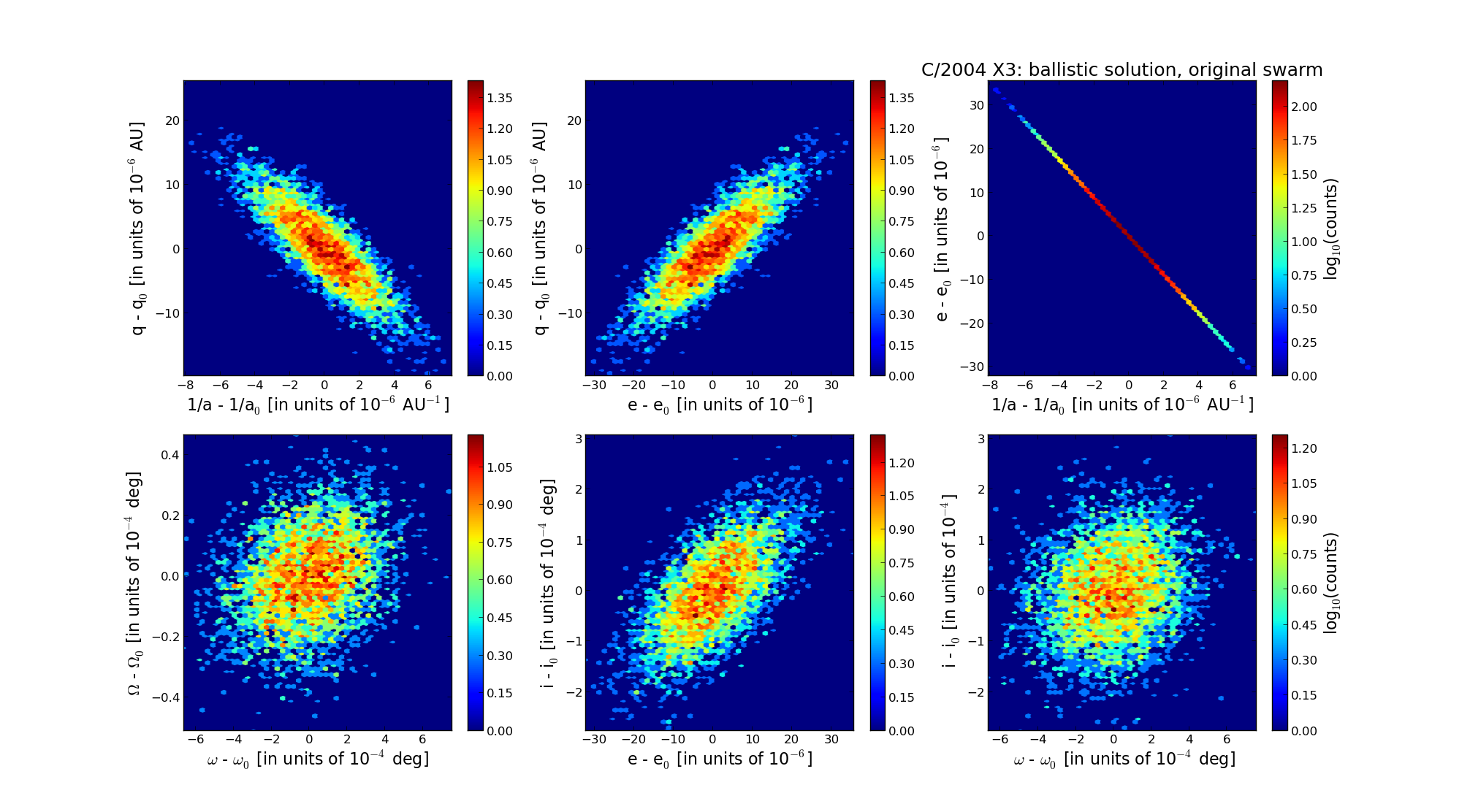| Solar System Dynamics & Planetology Group |
 |
C/2004 X3 LINEAR |  |
| Solar System Dynamics & Planetology Group |
 |
C/2004 X3 LINEAR |  |
| number of observations | 250 |
| number of residuals | 487 |
| data interval | 2004 Dec. 15 — 2006 Mar. 31 |
| rms [arcsec] | 0.51 |
| orbit quality class | 1a |
| Epoch (TT) | 20050530.0 | = JD 2453520.5 |
| time of perihelion passage (TT) | 20050617.237423 | ± 0.001410 |
| perihelion distance | 4.40225166 | ± 0.00000568 |
| eccentricity | 1.00625095 | ± 0.00000937 |
| argument of perihelion [deg] | 202.133519 | ± 0.000207 |
| longitude of the ascending node [deg] | 343.045098 | ± 0.000014 |
| inclination [deg] | 81.063070 | ± 0.000082 |
| inverse semimajor axis [10-6 au-1] | -1419.94 | ± 2.13 |

| Epoch (TT) | 17010414 | |
| time of perihelion passage (TT) | 20050618.219538 | ± 0.001403 |
| perihelion distance | 4.38911289 | ± 0.00000571 |
| eccentricity | 0.99994104 | ± 0.00000930 |
| argument of perihelion [deg] | 202.411327 | ± 0.000206 |
| longitude of the ascending node [deg] | 343.029540 | ± 0.000014 |
| inclination [deg] | 81.169463 | ± 0.000081 |
| inverse semimajor axis [10-6 au-1] | 13.43 | ± 2.12 |
| Epoch (TT) | 23020603 | |
| time of perihelion passage (TT) | 20050616.645926 | ± 0.001397 |
| perihelion distance | 4.39810248 | ± 0.00000560 |
| eccentricity | 1.00281265 | ± 0.00000933 |
| argument of perihelion [deg] | 202.017151 | ± 0.000206 |
| longitude of the ascending node [deg] | 343.041981 | ± 0.000014 |
| inclination [deg] | 81.093110 | ± 0.000081 |
| inverse semimajor axis [10-6 au-1] | -639.51 | ± 2.12 |